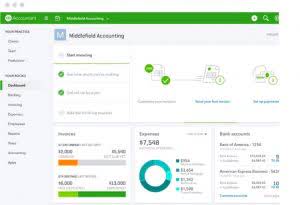Content
- Importance of Double Declining Balance Method
- What are Plant Assets? – Financial Accounting
- What are the advantages of the declining balance method?
- What Is the Double-Declining Balance (DDB) Depreciation Method?
- What are the advantages of using the double declining balance method?
- Double Declining Balance Depreciation Calculator

Over the life of the equipment, the maximum total amount of depreciation expense is $10,000. However, the amount of depreciation expense in any year depends on the number of images. It’s important to note that the Double Declining Balance Method should be consistently applied yearly and disclosed in the financial statements to provide transparency to investors and other stakeholders. The articles and research support materials available on this site are educational and are not intended to be investment or tax advice. All such information is provided solely for convenience purposes only and all users thereof should be guided accordingly. Doing some market research, you find you can sell your five year old ice cream truck for about $12,000—that’s the salvage value.
How to calculate 150 db depreciation?
Example of 150% reducing balance depreciation
The 150% reducing balance method divides 150 percent by the service life years. That percentage will be multiplied by the net book value of the asset to determine the depreciation amount for the year.
Every year you write off part of a depreciable asset using double declining balance, you subtract the amount you wrote off from the asset’s book value on your balance sheet. Starting off, your book value will be the cost of the asset—what you paid for the asset. (You can multiply it by 100 to see it as a percentage.) This is also called the straight line depreciation rate—the percentage of an asset you depreciate each year if you use the straight line method. Under the generally accepted accounting principles (GAAP) for public companies, expenses are recorded in the same period as the revenue that is earned as a result of those expenses. In the case of an asset with a 10-year useful life, the depreciation expense in the first full year of the asset’s life will be 10/55 times the asset’s depreciable cost. The depreciation for the 2nd year will be 9/55 times the asset’s depreciable cost.
Importance of Double Declining Balance Method
Also, note that the expense in the fourth year is limited to the amount needed to reduce the book value to the $20,000 salvage value. For example, if the equipment in the above case is purchased on 1 October rather than 2 January, depreciation for the period between 1 October and 31 December is ($16,000 x 3/12). These points are illustrated in the following schedule, which shows yearly depreciation calculations for the equipment in this example. This rate is applied to the asset’s remaining book value at the beginning of each year. They determine the annual charge by multiplying a percentage rate by the book value of the asset (not the depreciable basis) at the beginning of the year.
To create a depreciation schedule, plot out the depreciation amount each year for the entire recovery period of an asset. The prior statement tends to be true for most fixed assets due Online Bookkeeping Services for Small Businesses to normal “wear and tear” from any consistent, constant usage. But before we delve further into the concept of accelerated depreciation, we’ll review some basic accounting terminology.
What are Plant Assets? – Financial Accounting
Because twice the straight-line rate is generally used, this method is often referred to as double-declining balance depreciation. Under the declining balance method, depreciation is charged on the book value of the asset and the amount of depreciation decreases every year. Because the equipment has a useful life of only five years it is expected to quickly lose value in the first few years of use – making DDB depreciation the most appropriate method of depreciation for this type of asset.
This formula calculates the depreciation expense for each year of the asset’s useful life until the asset’s book value reaches zero or the end of its useful life, whichever comes first. If the asset for which you are calculating depreciation
contains an averaging convention, LN adjusts the depreciation expense for the first half year, quarter,
or month calculation. Is a form of accelerated depreciation in which first-year depreciation is twice the amount of straight-line depreciation when a zero terminal disposal price is assumed.
What are the advantages of the declining balance method?
The useful life of the machine is estimated to be 10 year with its salvage value (the resale value of the asset once its useful life is over) of $10,000. Just because you may need to calculate your depreciation amount manually each year doesn’t mean you can change methods. The total expense over the life of the asset will be the same under both approaches. In year 5, however, the balance would shift and the accelerated approach would have only $55,520 of depreciation, while the non-accelerated approach would have a higher number. By accelerating the depreciation and incurring a larger expense in earlier years and a smaller expense in later years, net income is deferred to later years, and taxes are pushed out. In the wake of the COVID-19 pandemic and escalating tensions with China, American companies are actively seeking alternatives to mitigate their supply chain risks and reduce dependence on Chinese manufacturing.
- Due to the accelerated depreciation expense, a company’s profits don’t represent the actual results because the depreciation has lowered its net income.
- Calculate the depreciation
expenses for 2011, 2012 and 2013 using 150 percent declining balance
depreciation method. - For accounting purposes, companies can use any of these methods, provided they align with the underlying usage of the assets.
- Businesses should follow the relevant guidance for their jurisdiction when using this method.
- As an alternative to systematic allocation schemes, several declining balance methods for calculating depreciation expenses have been developed.
Variable-declining balance uses the double-declining factor but also initiates the automatic switch to straight-line depreciation once that is greater than double-declining. To calculate depreciation using the Double Declining Balance Method, the asset’s initial cost is multiplied by a depreciation rate, which is typical twice the straight-line depreciation rate. The resulting amount is https://accounting-services.net/accounting-services-and-bookkeeping-services-2/ then subtracted from the asset’s remaining book value to determine the new book value. This process is repeated each year until the asset’s book value reaches zero or the asset is no longer in use. The Double Declining Balance Method is often used for assets expected to have a higher level of usage or obsolescence in the early years of their useful life, such as equipment or machinery.
What Is the Double-Declining Balance (DDB) Depreciation Method?
This pattern will continue and the depreciation for the 10th year will be 1/55 times the asset’s depreciable cost. The “double” or “200%” means two times straight-line rate of depreciation. For instance, if an asset’s estimated useful life is 10 years, the straight-line rate of depreciation is 10% (100% divided by 10 years) per year.
Is declining balance method same as reducing balance method?
The reducing-balance method, also known as the declining-balance method, in the initial years of an asset's “service.” As with the straight-line method, you apply the same depreciation rate each year to what's called the “adjusted basis” of your property.
The theory is that certain assets experience most of their usage, and lose most of their value, shortly after being acquired rather than evenly over a longer period of time. This method takes most of the depreciation charges upfront, in the early years, lowering profits on the income statement sooner rather than later. At the end of 10 years, the contra asset account Accumulated Depreciation will have a credit balance of $110,000.
